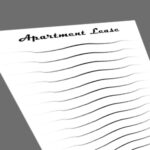 Lease drafting not for faint of heart
Lease drafting not for faint of heart
Landlords are often surprised when they call me to have a lease drafted. When I tell them that an attorney’s lease drafting assignment for a Chicago residential lease will generally take three to four hours of billable time, they ask me whether or not I have a “standard form” to provide to them at a lower cost.
I don’t.
That’s because there is no rental situation that calls for a standard form. There are not “standard” rental buildings. Some have parking, some have laundry in the basement, some have options to extend, and some (worst of all) are governed by the Chicago Residential landlord and Tenant Ordinance. Every rental situation I know of requires some degree of customization.
In fact, most rental forms Chicago landlord find floating around will have a legend indicating that landlords should consult an attorney before using the form. That’s probably because the form drafters know that relying on a form alone will not address the many choices to be made by a landlord and issues to be addressed in a lease.
When I draft a lease, I need to get a sense of the property itself – its configuration and amenities. From there, I can determine whether or not it needs radon and lead disclosures, life safety disclosures, bedbug and ordinance disclosures, etc. From there, I get into some of the nitty-gritty, like dealing with possible association rules, move-in/out procedure, crime-free disclosures, utility provisions, Cook County lock change rules and such. Leases are complex documents. It may seem like they are not, but they are. And they demand proper attention.
Unfortunately, there is no form to help landlords make these decisions. I can understand a landlord’s hesitation at spending a bunch of money on an attorney to draft a lease when there are forms galore available for free on the internet. Then again, a good part of my practice is fueled by fixing problems that arise when tenants sue landlords for lease and CRLTO violations.
